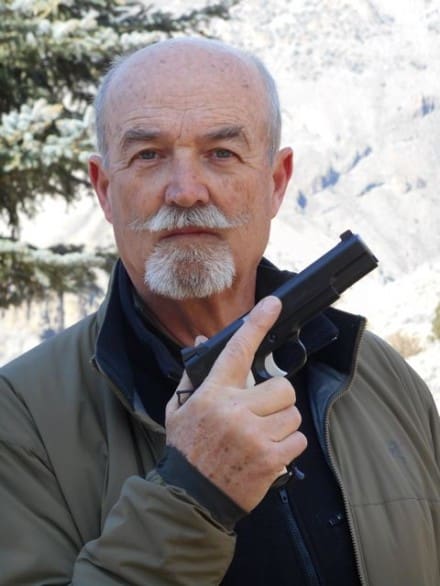I note that the latest vibe from the FBI is that they are looking to go back to a 9x19mm pistol. Modern 9x19mm self defense ammo is certainly much better than just a decade ago. An educated guess as to the pistol they are looking at is the Sig Sauer P320. This is a very modern striker fired pistol that has many fans. I have fired them, but have no dedicated trigger time on one to make any kind of judgement. I can not but reflect that a few decades ago, my carrying a cocked-and-locked 1911 pistol was the cause for alarm by many as being dangerous. More than once I heard “Deputy, do you know your pistol is cocked?” Life is about change, and now the FBI is looking to adopt a pistol without any form of external safety; not even the trigger activated safety button made famous by Glock and copied by so many makers. Who would have thought…
The US Military is looking at a new service pistol (XM17) program. Apparently, it too will be a striker fired design. I still carry and prefer the 1911 pistol, as it meets my needs just fine. I teach with and try to use whatever pistol platform that most of the students in my class use. If a military class that may be a Beretta M92, often a Glock 17 or 19 is the choice. LE classes may require a Glock 22 or S&W M&P.
I am a fan of the H&K VP9, and currently use a Sig P226 for my overseas requirements. They all are fine sidearms. All serve their purposes well. Many people love to debate the which pistol is best. I have been around this business long enough to realize the weapon is not really all that important, it is the guy behind the trigger that matters. Yes, I have favorites, but whether it is one of my pet 1911s or Glock 17/19 issued to me for a training program, it is MY job to make it work. What I have learned after 35 years in this business is that it is my job to learn to use them effectively, and not to get married to one gun or design. Remember, in the real world we don’t always get to use the gun we want, sometimes we have to use what is available.
– Ken Hackathorn
Ken Hackathorn has served as a US Army Special Forces Small Arms Instructor, Gunsite Instructor, and NRA Police Firearms Instructor. He is currently an FBI Certified Firearms Instructor, Certified Deputy Sheriff with Washington County SO, Ohio, and a SRT member and Special Response Team trainer. Ken has trained US Military Special Operations forces, Marine FAST and SOTG units and is a contract small arms trainer to FBI SWAT and HRT.
Ken has provided training to Federal, State, and local law enforcement agencies and been active in small arms training for the past 25 years. He has written firearms related material for Guns & Ammo, Combat Handguns, Soldier Of Fortune, and currently American Handgunner and contributed to at least six other gun/shooting journals. Ken was also a founding member of IPSC and IDPA.
To see Ken’s Training Class Schedule visit aliastraining.com.
Gunfighter Moment is a weekly feature brought to you by Alias Training & Security Services. Each week Alias brings us a different Trainer and in turn they offer SSD readers hard earned words of wisdom.












































































































